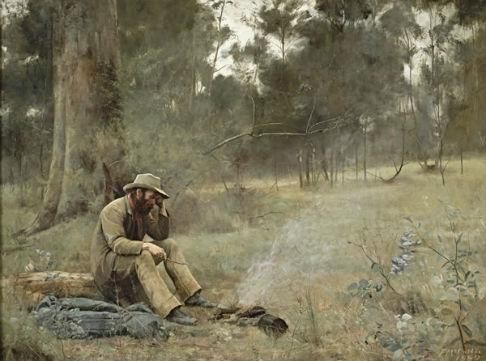Here are some numbers to wrap your head around. There are 44,000 artists working in Australia today. In a population of 22.6 million, that means one person in every 513 is a working artist. If there are 1,000 kids at your school, two will end up making a living with their art. Look around. Can you spot them? Look for a girl and a boy, because they split nearly equally male and female, 56% to 44%. Look for a musician. A quarter of all working artists are musicians. Look for those who were born in Australia. Three out of every four artists working in Australia were born in Australia.
Because you’re young you probably won’t be seeing a working artist. The median age for artists in Australia is 47. They are in it for the long haul. Maybe artists never retire. Maybe they don’t want to. Maybe an artist’s work is never finished.
Unless you are going to inherit a lot of money real soon, you will need to know what artists earn. You’re probably prepared for this. As a rule, they don’t earn as much as the rest of the working population. The median annual income for artists is $35,900. For the rest of Australia it’s $43,300. There are nearly as many bus drivers in Australia as there are artists, but you can be sure a bus driver earns more than most artists, not all, because one in 50 artists earn more than $150,000 a year from their creative work in wages or salaries, sales and royalties. No bus driver would earn that.
Go back to that figure. One in 50. Do they seem like good odds? Remember, only two kids in a school of 1,000 will be working artists. You will need 25 schools of 1,000 students to find 50 artists. Only one person in those 25 schools will make it big as an artist. Let’s hope it’s you.
For reasons that are obvious by now, many artists in Australia have to do other forms of work to keep their heads above water, in fact 55% of them. Only 45% of artists get by as artists alone. Musicians tend to become teachers, in schools or privately. Dancers become pilates instructors. Novelists become editors and visual artists become designers. Artists take all sorts of jobs with flexible hours to leave time for their art. Half of all artists find work outside the arts sector. Many like it that way to find the headspace to work on their artistic ideas while doing something else.
Another way to find an income is to apply for a grant. Here the story gets better. The good news is that two out of every three artists who applied for funding in the last five years got some money. Often it’s not a lot of money, but it does add to their earnings. The bad news is that one part of being an artist is being good at writing funding applications. That’s an art in itself and something that must be learnt. Keeping an updated CV and work folio is part of the back-up you will need for your applications.
If the picture looks bleak, it shouldn’t. Every time you see a bus driver, think that somewhere in a studio, a stage or a desk that you can’t see an artist is busy working and creating. And that work isn’t always invisible. For many of them their work does get seen. Recognition is a reward in itself, even if it doesn’t pay the bills. 40% of works made by Australians is seen overseas. It’s a big audience about to get even bigger with the internet at your fingertips.
The challenges are obvious. Often there’s not enough time for artists to develop their talents, and Australia is a small market that offers limited opportunities to keep every artist busy full time. The opportunities they do see are in new technologies. 60% of working artists believe new technologies will expand their opportunities and their income. That’s a lot of faith in the future and you are already part of that future. 38% use the internet to create their art. You were born into the internet generation. It’s your world. One in every three artists promotes their work online. You know this almost instinctively.
So there you have it. That’s how it is if you want to work as an artist in Australia. There’s a whole new world in front of you, but you’re coming from the same space as every artist from any age. You are driven by the love of what you do. Forget the figures for now. Two words are left. Passion and persistence. They are like your right arm and your left arm. You use them both to find the strength to keep going to where you want to be.
Wherever you go, you will find support. A huge supporter of the arts in this country is the Australia Council for the Arts. It is their research we’ve used and their talents that made the clip below. Professor David Throsby and his team from Macquarie University conducted the artist survey and Distinguished Professor Stuart Cunningham and his team from the Queensland University of Technology created the census study.
For more research about what it means to work as an artist in Australia, go to the Australia Council for the Arts website .





